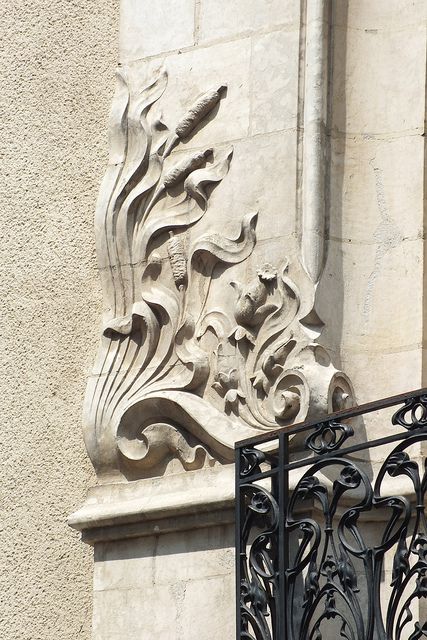#5017. Baroque Stone Façade Decoration with Floral Motifs
The image showcases an exquisite example of architectural decoration in the form of a bas-relief on a building façade. This decorative element is executed in a style reminiscent of late Baroque or Rococo, with characteristic curved, flowing forms that imitate botanical motifs. The sculptural composition elegantly protrudes from the wall plane, creating an expressive interplay of light and shadow.
The stone ornament is organically integrated into the architectural solution of the building's corner, emphasizing its significance in the overall composition of the façade. The material of the decor—light-colored stone (likely limestone or sandstone)—contrasts with the rougher texture of the plaster on the adjacent wall. At the bottom of the frame, a fragment of wrought iron railing for a balcony or fence is visible, crafted in black metal with characteristic intricate patterns that stylistically echo the stone decoration, creating a cohesive ensemble.
Such decorative elements are commonly found in European architecture of the 18th-19th centuries and testify to the architects' desire to enrich building façades with plastic, dynamic forms that give structures special expressiveness and artistic value.
